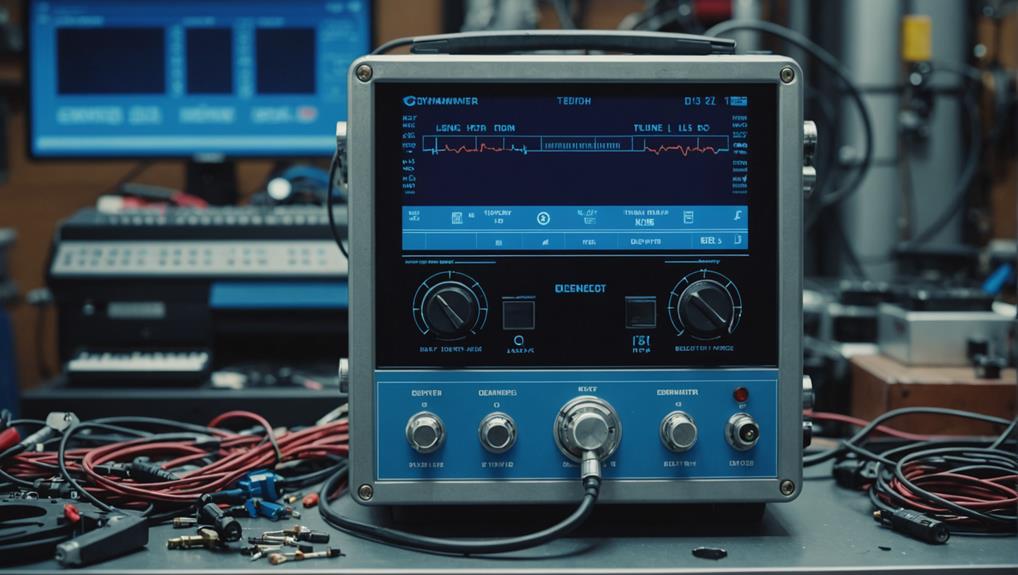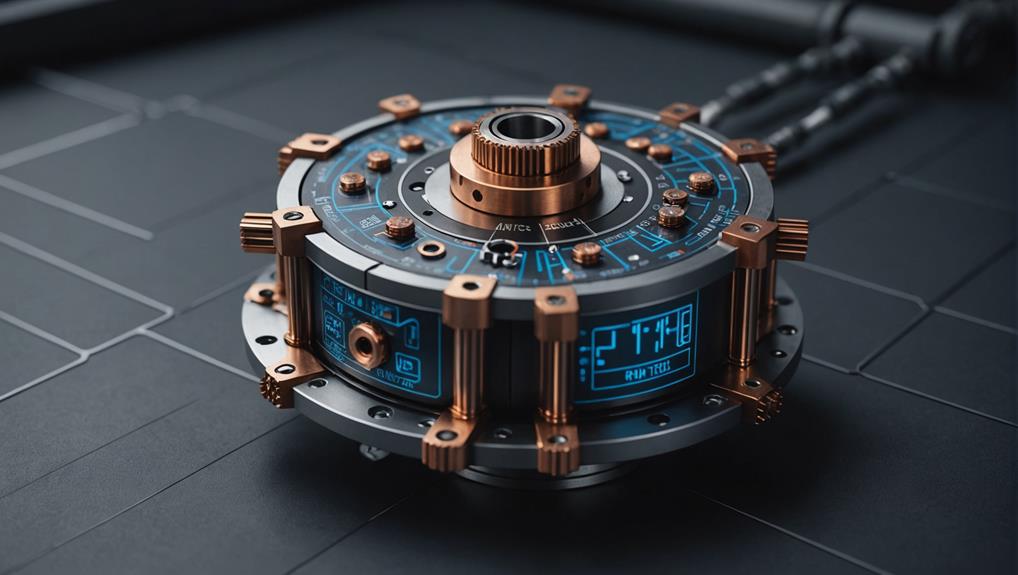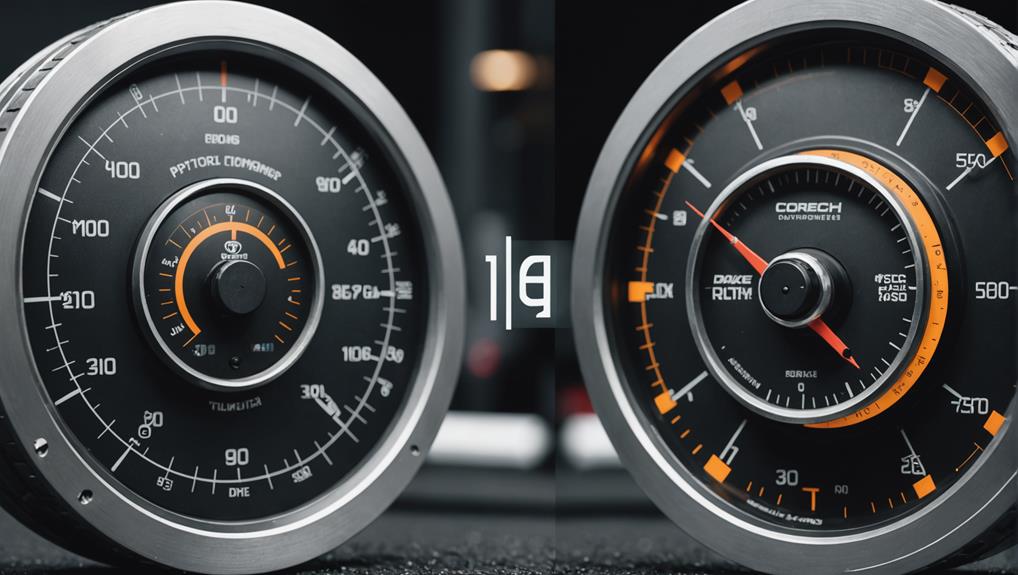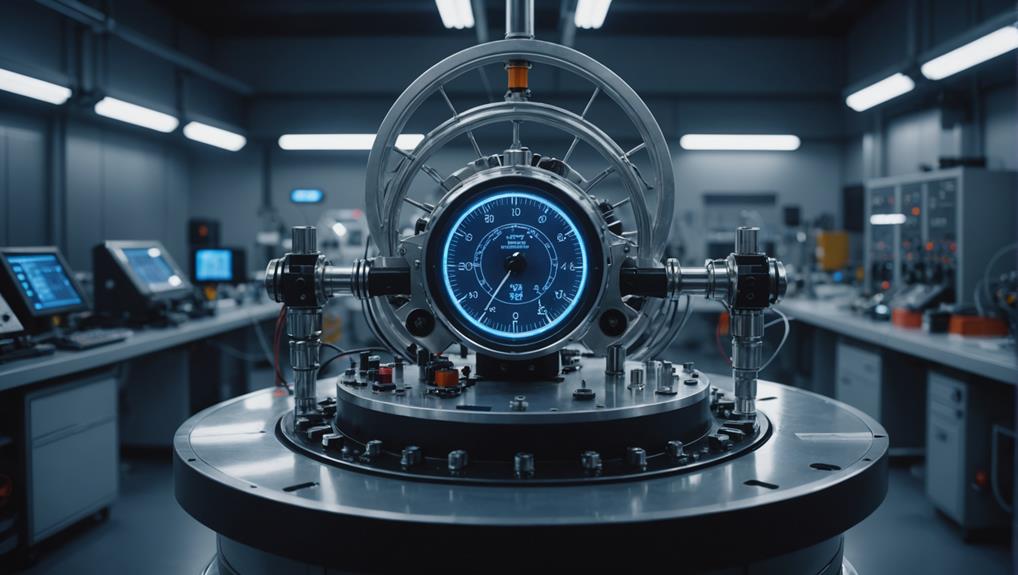
How Dynamometers Enhance Engine Diagnostics and Testing
Necessitating precise measurements, dynamometers unlock the secrets of engine performance, but what else can they reveal about engine diagnostics and testing?
Inertia dynamometers accurately measure power output through accelerating a known mass load, simulating dynamic driving conditions.
The measurement principle is based on the conservation of energy, where the energy absorbed is equal to the energy produced. Power output is calculated as the product of angular velocity and torque.
These dynamometers initiate testing above the idle position and progress to maximum RPM, providing a realistic simulation of dynamic driving conditions.
As users gain a deeper understanding of inertia dynamometers, they will uncover the full range of their capabilities and applications.
Inertia dynamometer fundamentals are rooted in the principle of rotational inertia, where resistance to changes in rotational speed is directly proportional to the mass of the load and its radius from the axis of rotation.
This fundamental principle enables inertia dynamometers to accurately measure power output, simulating dynamic driving conditions. Accelerating a known mass load allows inertia dynamometers to precisely calculate power output, taking into account factors such as rotational speed (RPM), mass, and load.
As power output is directly proportional to torque output, inertia dynamometers are ideal for testing small engines, motors, and gearboxes. They operate by measuring the acceleration of a rotating drum or flywheel to calculate the engine's power output, making them suitable for rapid power assessments and diagnosing problems.
Focusing on acceleration and drum spool-up speed, inertia dynamometers provide precise power measurements, making them suitable for tasks like emissions testing and certification.
Inertia dynamometers operate on the fundamental principle of measuring power output by accelerating a known mass load, enabling accurate calculation of the force required to achieve a specific acceleration rate.
This measurement principle is based on the conservation of energy, where the energy absorbed by the dynamometer is equal to the energy produced by the engine. The power output is calculated as the product of the angular velocity and torque (P = τ × ω), allowing for precise measurement of an engine's or motor's capabilities.
Inertia dynamometers initiate testing above the idle position and progress to maximum RPM, providing a more realistic simulation of dynamic driving conditions.
The acceleration rate of the mass load is directly proportional to the power output of the engine or motor being tested, enabling accurate measurement of power output.
Using a load cell transducer, inertia dynamometers accurately measure power output over a wide range of engine speeds, typically between 1,000 to 10,000 revolutions per minute (RPM), under steady-state conditions, making them a reliable power absorber for dynamometer testing.
Measuring power output with precision requires a thorough comprehension of the diverse range of inertia dynamometers available, each catering to specific testing requirements and engine types.
Inertia dynamometers can be categorised into different types, each with its unique characteristics and applications. Eddy current brakes, commonly used in modern chassis dynos, provide rapid load settling. Magnetic powder brakes and hysteresis brakes are designed for absorption only, whereas fan brakes use a fan to blow air and provide engine load. Force lubricated oil shear brakes, in contrast, use friction discs and steel plates to apply torque.
Low-inertia dynamometers, featuring smaller, lighter drums to minimise rotational inertia, are ideal for high-speed testing.
High-inertia dynamometers, with larger, heavier drums, are suited for low-speed, high-torque applications.
Frictionless inertia dynamometers utilise advanced bearings to minimise frictional losses, ensuring highly accurate measurements.
Hybrid inertia dynamometers combine the benefits of different types, offering a versatile and accurate testing solution.
Understanding the characteristics and applications of each type of inertia dynamometer is vital for selecting the right tool for precise power output measurement.
Venturing into the world of inertia dynamometers reveals a complex landscape of advantages and limitations, each playing a crucial role in determining the suitability of these devices for specific testing applications.
Inertia dynamometers offer several advantages.
They provide more accurate and consistent results compared to brake dynos, especially for high-performance motor testing, as they simulate real-world acceleration conditions. These devices are simpler and more accessible than brake dynos, making them a more viable option for testing small to medium-sized motors.
Inertia dynamometers excel in rapid power assessments and diagnosing problems, making them ideal for tasks that require quick and precise measurements. The primary advantage of inertia dynamometers is their ability to replicate road load conditions, making them suitable for emissions testing and certification.
However, inertia dynamometers also have limitations.
They only work while the engine is under acceleration and are less suitable for testing at constant speeds or under varying load conditions.
Factors such as frictional losses, inertia, and heat generation can affect their accuracy.
Inertia dynamometers have extensive practical applications in emissions testing, engine development, and medical fields, where precise measurement of power output and performance is crucial.
In emissions testing, they replicate road load conditions, accurately measuring power output and emissions in standard testing cycles, such as those defined by the US EPA.
In medical applications, inertia dynamometers assess grip strength, back strength, arm strength, and leg strength in athletes, patients, and workers, providing valuable data for rehabilitation and research.
They also excel in sports and ergonomics, measuring strength and performance in athletes.
In industries like automotive and aerospace, inertia dynamometers simulate dynamic load conditions, enabling accurate testing and optimisation of engine power.
Their load control capabilities make them ideal for fine-tuning engines under diverse load conditions, delivering consistent results.
Additionally, inertia dynamometers cater to different application requirements, offering precision and realism in measuring power output, making them a valuable tool in the industry.
Inertia Dynamometers: Principles and Operation Explained
Inertia Dynamometer Fundamentals
Hyper Power utilises inertia dynamometers, a type of dynamometer that measures the rotational speed and torque of a machine or engine by applying a known braking force to the rotating shaft, causing it to decelerate. The deceleration rate is directly proportional to the torque output of the machine.
Operating Principles and Measurement
Our operating principle is based on Newton's law of motion, which states that force is equal to the mass of an object multiplied by its acceleration. By measuring the deceleration rate of the rotating shaft, the torque output of the machine can be calculated. The measurement process typically involves attaching a flywheel or rotor to the shaft, increasing the inertial mass and amplifying the deceleration effect.
Types of Inertia Dynamometers
We offer several types of inertia dynamometers, including flywheel-type, rotor-type, and hydraulic-type dynamometers. Flywheel-type dynamometers use a flywheel to increase the inertial mass, while rotor-type dynamometers use a rotor with a high moment of inertia. Hydraulic-type dynamometers use a hydraulic system to apply a controlled braking force.
Advantages and Limitations Explained
Inertia dynamometers offer several advantages, including high accuracy, low cost, and simple operation. However, they also have limitations, such as limited measurement range and potential for errors due to friction and other external factors. If you have any questions about our Custom Dyno Solutions, Installation and Setup, Training and Certification, Technical Support and Maintenance, Software Updates and Upgrades, Diagnostics and Performance Analysis, Rental Services, Dynamometer Testing Services, and Accessories and Parts, please do not hesitate to contact us.
Applications and Real-World Uses
Hyper Power's inertia dynamometers are widely used in multiple industries, including automotive, aerospace, and industrial manufacturing. They are used to test and measure the performance of engines, motors, and gearboxes, as well as to monitor and control the torque output of machines.
Inertia dynamometers provide a precise and cost-effective means of measuring torque output. Their operating principle, based on Newton's law of motion, allows for accurate calculation of torque. With different types and applications, inertia dynamometers are a valuable tool in many industries.

Necessitating precise measurements, dynamometers unlock the secrets of engine performance, but what else can they reveal about engine diagnostics and testing?

Navigating the complexities of torque measurement requires a deep understanding of the underlying principles and mechanisms to ensure accurate results.

Precise control and optimization of engine performance await, but only for those who unlock the secrets of dynamometer-driven data analysis.

Gaining insight into the differences between inertia and brake dynamometers is crucial for ensuring accurate testing results in various industries.

Tapping into the precise measurement capabilities of dynamometers, uncover the secrets to optimizing fuel efficiency and slashing emissions in the automotive industry.

Witness the importance of rigorous safety protocols and best practices in dynamometer testing to avoid catastrophic failures and ensure accurate results.

Harnessing the nuances of precision measurement is crucial to avoiding costly errors in dynamometer testing, but what are the key factors to consider?

Witness the transformative power of dynamometers in unlocking your vehicle’s hidden performance potential, but only if you know how to harness their precision.